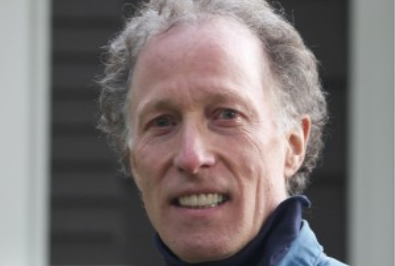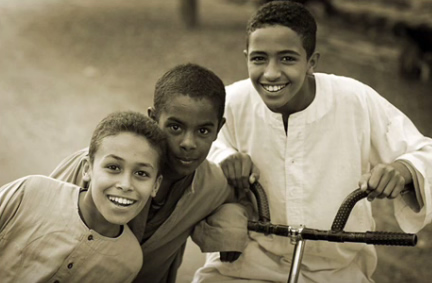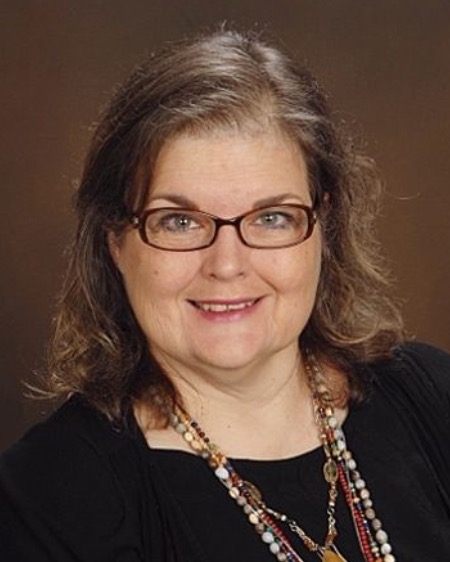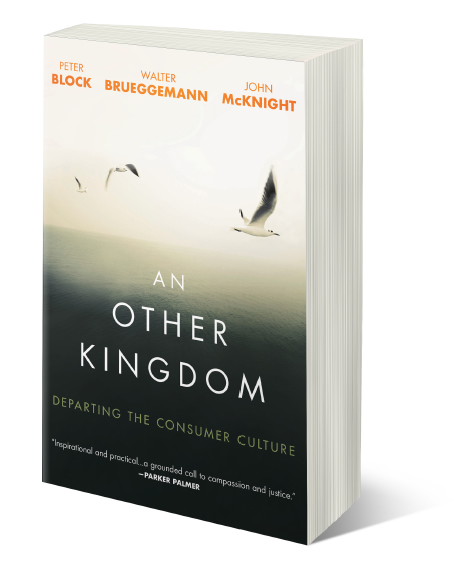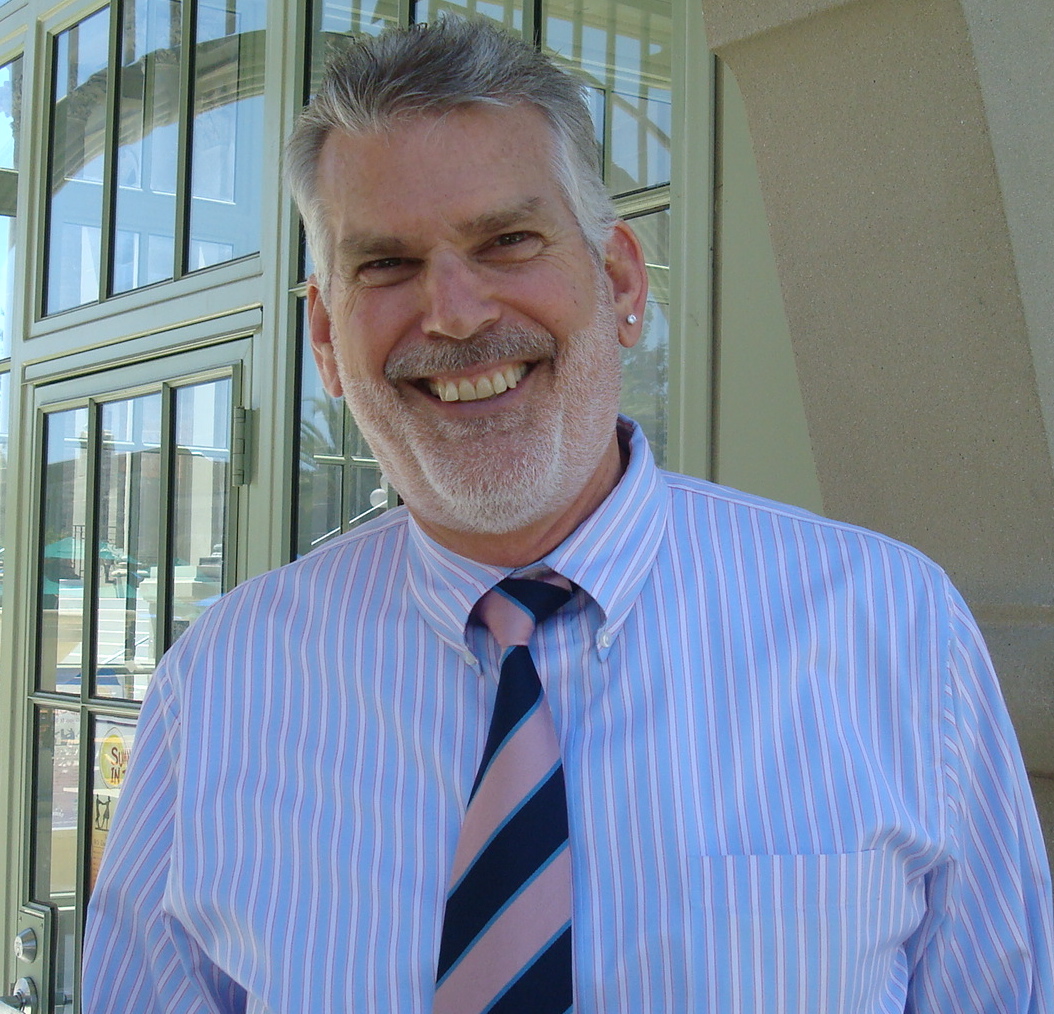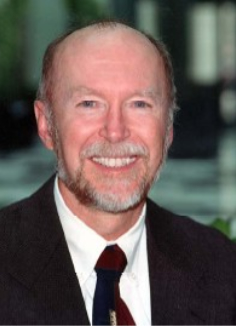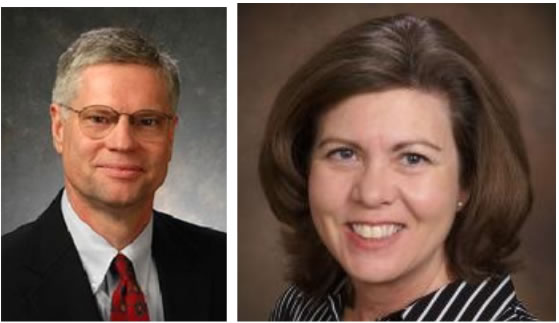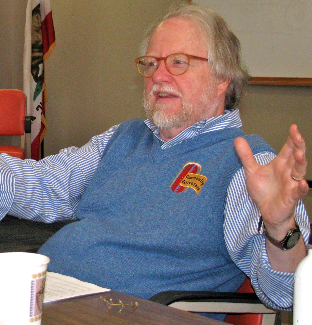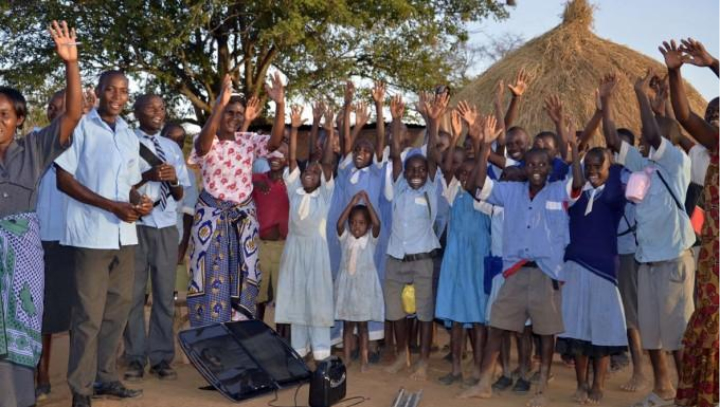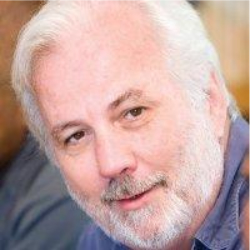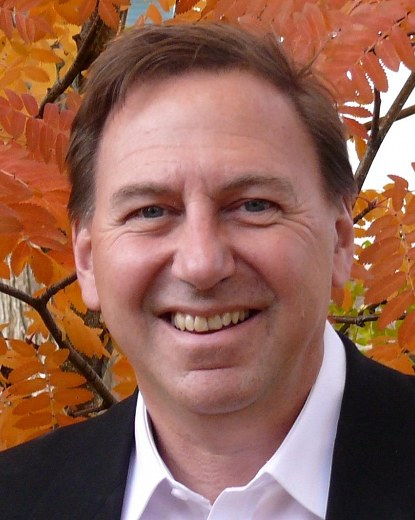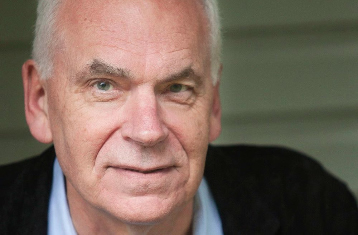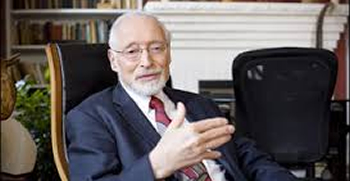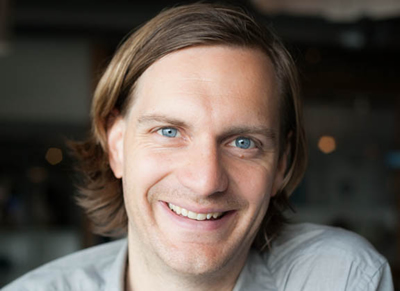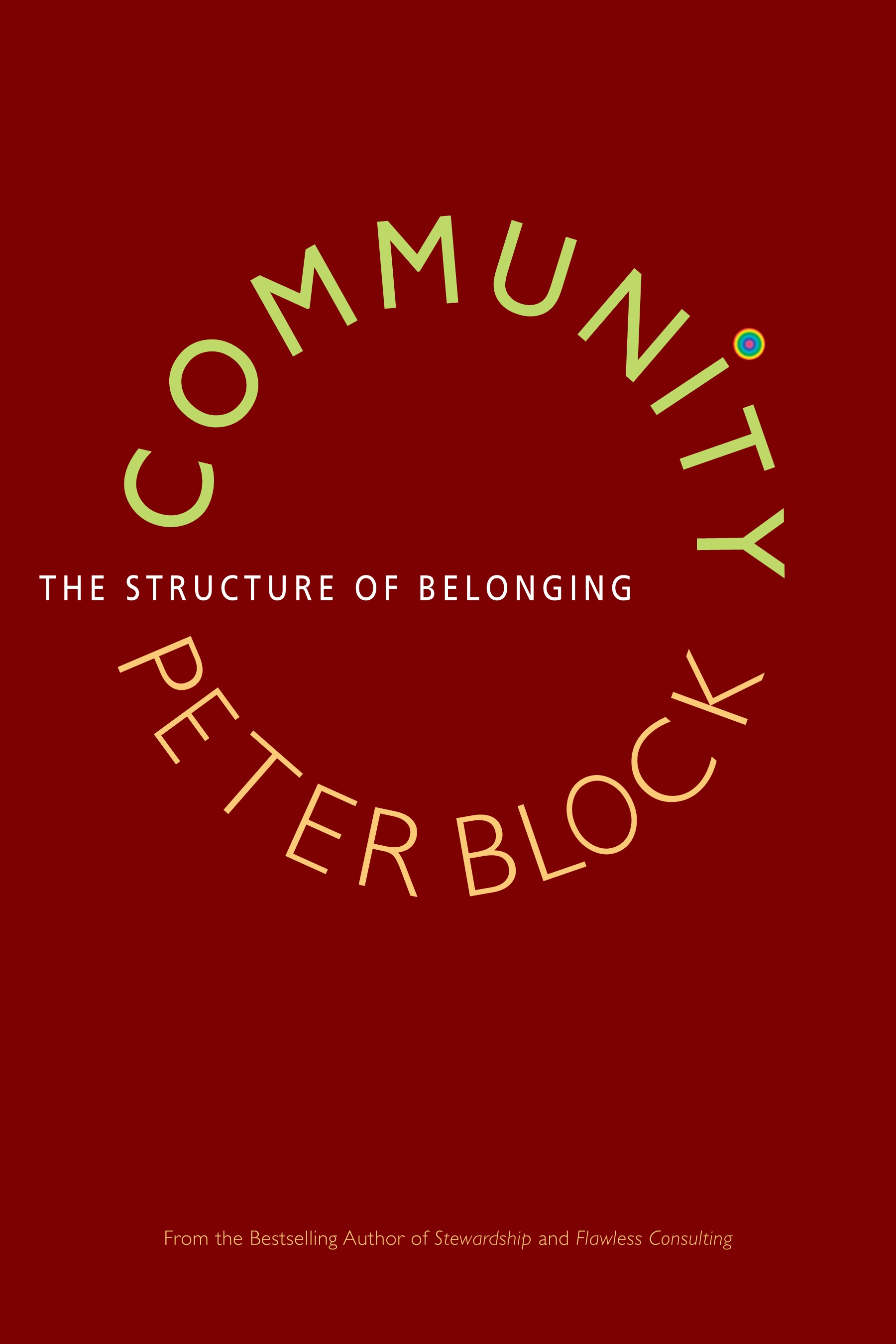Category Archives: The Common Good
Peter Block on the Abundant Community: An MWS Podcast
Barry Daniel of The Middle Way Society speaks with Peter Block in this podcast using the broad themes of Peter’s books to base the discussion. The Middle Way Society’s aim is to encourage a universal approach to living a more integrated, ethical life, avoiding dogma or any appeal to authority.
Source: www.middlewaysociety.org
Introduction to Restore Commons
Integrative Law: A Legal System that Builds Relationships
Atty Kim Wright
Kim Wright talks with Peter Block , John McKnight and guest caller Edgar Cahn about being an Integrative Lawyer and her practice of Restorative Justice: an alternative way of dealing with crimes and taking a holistic approach that factors in emotions of both parties. She speaks about how Restorative Justice is not well received by many who practice law, and touches on how it started with Nelson Mandela. Kim also explains Therapeutic Jurisprudence: a way to create solutions rather than unhelpful punishments, and discusses the related practice of Unitive Justice.
An Other Kingdom
Putting Technology to Work in Building Community
Ed Everett
Ed Everett, former city manager and now city strategist at nextdoor.com, talks about how technology and social media can bring neighbors closer together and strengthen community ties.
Working in the Gap to Enhance Productivity
Tom Mosgaller
Tom Mosgaller talks about the necessity of having “gappers” aka people who work in the space between citizens and institutions.
Heart Surgeon Leads the Way
Quick Summary:
Doctors Paul Uhlig and Ellen Raboin talk about the flaws in our current healthcare system: mainly how the practice of medicine does not do enough to build community for patients in hospitals. They talk about Relational Infrastructure.
For ten years following the 2010 publication of their book The Abundant Community: Awakening the Power of Families and Neighborhoods, John and Peter hosted conversations with neighborhood activists on their community-building work. All their ideas are still at work and continue to be influential for anyone engaged in creating the future in the present. The transcript here has been edited for length and clarity.
Full Transcript:
Heart Surgeon Leads the Way Toward Collaborative Health Care
Conversation with Paul Uhlig, MD, and W. Ellen Raboin
February 11, 2014
Peter Block: Here’s the context of why I am excited about what Paul and Ellen are doing. There is great conversation in this world about health care reform and if you look at most of it, it is really about better disease management, better health care management. Mostly about how to automate the process, how to lower the costs, increase speed, and make it more convenient. And to me that’s not really reform, and I thought it was until I met Paul several years ago.
What Paul represents is to me the real reform. which is to change my relationship with my own health and with the health care professional. What’s exciting about what Paul and Ellen have done is that they have invited us to change the relationship we have with our own health and the people around us and treat health as social phenomenon, not a medical problem to be solved.
So, I’m excited, Paul, and I don’t quite know how you would like to begin. You both have written a book. Maybe you could give us a little introduction about what’s exciting to you now about what you are in the process of writing about and creating.
Paul Uhlig: Let me begin by thanking you and John and Maggie and Leslie and the listening audience for the privilege of having the two of us with you today. I’ve long been an admirer of your work. The audience may or may not know, but you and I had an opportunity to cross paths in Cincinnati several years ago, and we worked side by side a little in health care. It was a tremendous experience and I’m so grateful for continued friendship. Ellen and I bring complementary perspectives and maybe I will let her begin from this point. Ellen, I could I pass on to you?
Ellen Raboin: Yes, and again thank you for having us here.
I met Paul in a cultural workshop after he had done some wonderful things in a hospital I’m in where the culture had chewed him up and spit him out. What he was talking about was building community in the hospital and what that means. I like the way Peter put it that this as a social phenomenon that was going on. That was ten years ago and we never stopped talking and thinking about how we build a healing environment where people can relate in new ways. It turns out that relating in new ways is the way that you create new ways of relating. It’s been an adventure. Paul?
Paul: The work that we are focusing on is in hospitals and I say right from the very beginning that the interaction in a hospital is only a very small part of where health is created as we live and work together. That’s true for health in general and it is also true for the way that we respond and recover and heal from an episode of illness. Yet, an entire lifetime can be lived in those few days of a hospital stay for someone who is seriously ill and for their families and the people who are working together to care for them.
What’s very interesting to me and, framing a little bit of our book, is a transformation that’s occurring that is not limited only to health care. It’s a much deeper transformation in society. I certainly have been a party to that in the years of my career in health care. We all know every day that conversations are happening in our country about health reform, and I don’t really have a lot of deep passion about that one way or another. Whether we are Democrat or Republican or what we think of health care reform, legislation is smaller on my list of concerns.
Just step back a little and look at some very broad changes that are happening in health care. I’m a physician and I’m trained very well to do the things that I do, so it’s interesting to step back and look at that training and the work that the physicians, the nurses, social workers, pharmacists, and all the health professions do and how we are trained.
There’s basically a model that we work under that tends to abstract the person away, to focus on the disease, to focus on the scientific treatment of that; that’s wonderful and I don’t want to take anything away from that. But along the way as that model has been applied, for decades now, some things, some really important things have become off-center or lost. It’s interesting to just to reflect about some of the trajectory of this way of working in health care.
When we step back and look at health care we see a huge part of our society, with some of the very finest people that society has, who are very well trained, who are very responsible and working very hard every day across the country and the world. Yet, when we step back and see the results of that in terms of costs that are growing at an unsustainable rate, quality that is surprisingly uneven and not what we would wish it to be, people that really cannot open doors to heath care in a way that all of us wish that we could. The experiences of giving and receiving care is something that should be one of the most extraordinary of human interactions yet they are often leaving people feeling alienated, exhausted, discouraged, scared instead of restored anew.
So, my journey began by trying to understand how can it be that such good people work so hard and produce such less than optimum results for society? As I began to understand this, it was really fascinating to learn the history of these models that we work in. They have a birth date in the late 1800’s and a place of birth: John Hopkins Medical School, which was founded in 1893, and where there was a small core faculty of radical and revolutionary pioneers who became together at that time and basically broached this model of care.
There was another powerful event in history, which occurred in 1910, when Abraham Flexner, who studied the state of education and practice in the United States in health care wrote a scathing report in which he said there is so much that needs to be done, but there is this model, this Hopkins model, that prevents us from doing it.
It was a crystallization, not only in the United States, but also across the entire world, around these ways of working. The ways the hospitals are organized. The way the practitioners do their work. The underlying thought processes used, and the resources that are used, in trying to help people in times of need. We had 50 or 75 years of amazing benefits from that and my specialty is one of those, cardiothoracic surgery, which did not exist at that time, and there are so many things that can be done for people. Yet, increasingly those ways of working are no longer bringing us benefits and we have outgrown these methods. We have extended capabilities and have begun to fractalize what we do so much that the human core process is often lost and with that tremendous opportunities have arisen for trying to do things right.
So, our work is really about pathways to a new future. I’m increasingly certain that we are at a fascinating time in health care. A once in a hundred or a hundred-and twenty-year moment where a paradigm is being completely rewritten. One of those early pioneers, so long ago, was a very revered figure in health care and his name is William Osler. He gave a commencement address in about 1916 to a medical school class. It was called to my attention by a person I admire very much, a man named Brent James, who is a real pioneer in transforming health care practice in the Salt Lake City area. He found this talk and it is incredible.
Osler begins by saying, Congratulations. This is such a milestone in your life. You are about to go into your practice and you are going to do extraordinary things and you are going to have wonderful lives. And then he paused and said, But you know I actually feel sorry for you because you will never be able to experience the unbelievable thrills, the highs, the lows of creating a new way of working in health care as we did. And this transformation had nearly finished by the time that he gave this talk. And it was so poignant because for decades after that he would have had to give that same talk, but not today. Today he would probably be there with his bright eyes and say it’s come back again. It falls to your generation to create this new world of health care.
And that’s what I really feel at this moment. Now, like all true innovations, what this future is going to be is something we do not fully see yet. It’s pathways that we can see. Now what I was going to say is these pathways are true collaborative practices and active engagements of patients and physicians.
Peter: Could you make it more concrete for us and give us some examples of the transformation?
Paul: Let’s think about my friend Mary. Mary is a nursing educator and she is a maternal child nurse. About 13 years ago her mother and father were in a terrible car accident. They were going out to dinner with another couple and another driver collided with them head on. The two friends of the family were killed at the scene. Mary’s mother was very seriously injured with a head injury. Her father, who was the least healthy, she said, was the least injured. Over the next 30 days, Mary and her family helped care for her mother in what proved to be the last month of her mother’s life. The challenges that she encountered began when she first came to the hospital. Her parents’ pastor notified her that an accident had happened and she was there at the emergency room as a nurse and as a daughter and could not be allowed into the room to see her mother because they had not positively identified her mother even though Mary said, That is my mother. It took a phone call to the sheriff to release the names to even allow her to go in.
Over the next month her mother was transferred five different times. Mary spoke to multiple people who were trying very hard, working very well, trying to care for her mother, and yet, she said with each transfer a little a bit of her mother’s history was lost. She said if she had not been there, the ability to communicate and to connect between what one group thought and what another group thought, or even from one shift to another shift, was completely missing. Eventually her mother died. Probably her mother would have died anyway, but Mary was just grieving over the fractalized care that she had experienced and the way the entire thing took place.
Mary also talked about her father. She said her father was an older man in a wheelchair and a niece brought him 50 miles each day to spend time with her mother. When health care practitioners would come in they would ignore him, and they wouldn’t speak with him and she said the language went up a notch, because she was a nurse. She said Please, don’t ever forget that this person is here.
These are often, sadly, the realities that people experience in health care in hospitals. There is wonderful intent and so many people working so well and yet often there is this disconnectedness. Sometimes people say, Don’t you people talk to each other? So, we set out to figure out how we could do better. How could we do an even better job of doing this? And it turned out to be the simplest things. Simply trying to bring people together and to use ordinary language and to sit down and try to change these traditional hierarchies so that the strengths of the patients and families are woven into the care that we are giving.
As we began working in these ways, things started to change. Outcomes started to improve. Patient satisfaction started to change. Our sense of meaning and fulfillment started to change. Also, the context that we were creating became sort of alien in the hospital system and that created interesting challenges as well. Eventually several of these various successful models that we created did not survive in their organizational context. And so, what Ellen and I have been working on for the last ten years is an explication of what is really happening. We call them “Implantation Field Guides” for people who wish to follow on this journey and make their own contributions.
There are some concepts that we have been able to develop and apply that I think might have some meaning outside of health care as well. I’m concerned that I’m talking too much so I’m just going to be quiet and listen here for a minute.
Peter: Thanks, for making it concrete. Ellen, would you like to add something that would help us get more of the texture, like what it looks like?
Ellen: I think these pathways are a good way to think about that. That we are not specific to health care, but we are as a universe moving from the ideas of having experts to the ideas of doing things in a collective and collaborative ways.
The health care environment itself has been organized around individual providers and so that accounts for the power and respect we give to that way of organizing the work. It’s moving now to involving the patient and the family, and this is not a new discourse in our society. We want that for our family, we want that to organize around them, and furthermore to organize around what we are focusing on, which is organizing around meaning. When you start doing that and you start putting people in the same room together, and you ask each other what matters to you, you have a whole different context.
So, what we are talking about here is building what we are calling the social field that is full and rich with resources that enables us to do things that you can’t do when you are organized in a different way. So you can ask each other, How can we get this guy to his sister’s wedding? We know he is going to die and he is going to be dead in a month, but what he wants is to get to his sister’s wedding before that happens. So how can we do that? That way of thinking about what care is, and what health is, puts you on a different agenda as you are together.
So, what we are looking at is reflectiveness between the patterns of interaction that don’t naturally happen in a hospital, and we can build that intentionally. For those of you on the call, we have to figure out who you are. You know that the meetings happen by professionals or not at all. What would happen if we put different people in a room together?
Peter: What would I see?
Ellen: Right now, some possibilities are that when you walk in you see a conference room down at the end of the hall where a group of people are talking about the patient. You take that group of people and put them in the patient’s room with the family, where they are talking with the patient and with the family. Furthermore, you say, What can you tell us about what is important to your father? What can you tell us about what his life is like when he gets home? And can we all get clear about what that means here, today? So, there is that group standing in the hospital room seeing what we can do to change how the care happens and it opens up and makes it possible for us to say things to each other that we didn’t before.
Peter: I would see people standing in a circle in a hospital room, the patient’s room?
Ellen: Yes.
Peter: Who would be in that circle?
Ellen: All the disciplines would be there, because remember the driving question was, Don’t you guys talk to each other?
If you’ve had the experience of being in the bed in a hospital, the nurse comes by and the doctor comes by, and probably the pharmacist never comes by. And the residents come by, so you get a little bit of the story from each one, but who is integrating that? Now, the first thing that happens is for everybody to be there. But the thing that really happens is the emergence of something that wasn’t there before, because of what you can create with all of that context in the room, and all that feeling. It becomes sort of a magical circle. People look at each other and the patient says, All of you care about me, I had no idea that all of these people were caring about me.
There is a fondness that shows up between the patient and the family and then it becomes a healing circle. It’s not about the medicine anymore and it’s not about disease. The shift from the traditional care model, which Paul has pointed out has great benefits. “We have heart in Bed 2” ––patients are talked about that way. And now we can say, We have Mr. James and his wife over here; let’s go visit together and see what we need to do today. It’s about the promises that we made and the promises that we kept to each other. It’s a whole different language that comes with that way of caring for each other.
Paul: One of the interesting things, Peter, is our marker for whether this is working or not is whether there is laughter. It’s spontaneous and it’s kind of leveling, the idea that we are just people together. There’s an interesting term called “Patient Centered Care,” and we began to notice that really the patient wasn’t in the center of the circle, but the patient was a part of the circle. The patient, the family, and all of us are just contributing whatever expertise we can. The patient is contributing their sense of what they really want, the family is contributing, we are contributing different things, and somehow we are providing for each other’s care. And there is this very beautiful thing that takes place. It’s amazing.
Peter: John, do you have thoughts or questions that you might have for the conversation?
John McKnight: One thing I was wondering was whether both of you had examples. Here we are trying to get engaged in the process of the patient and the family and relatives. Can you give us some examples of what their participation and the context of their participation has meant in terms of your ability to do your job. You are listening to people who usually aren’t listened to, and you are a person of some expertise in diagnosis and treatment. What do you learn that you never learned before because they are in the discussion?
Paul: You learn the things that matter. The shift comes toward meaning. One of the patients that I remember is one who said all he wanted to do was to get home to his mule. He had one horse and one mule and that was more important to him than any of my medicine. “Just get me home” is what mattered to this person. Another gentleman raised Black Diamond watermelons and I’d never known what a Black Diamond watermelon was. Another man was an airline pilot and he was interpreting everything that was happening to him through the lens of “am I still going to be able to fly?”
So there is what matters to us in our lives and there is the inconvenience of all this, like this heart attack. And there are probably many different ways to respond, but if you were to create a polarity, one way is to respond to the heart attack and assume that our job is to fix the heart attack and then they can go on about their lives. That is what health care is often like. A different way is to say. What are our true goals here? What is this person finding meaning in and how can we weave the care that we are incorporating together in such a way that it supports the richness of those goals? It’s very different.
Ellen: You are talking about the hearts being broken, but there are also broken hearts. I hear lots of stories from Paul. One recent case was two brothers whose mother was very sick and wasn’t going to make it. The brothers hadn’t spoken in years, and it was broken family. And here you were at this moment, and they knew that it was better for their mother for them to stand together by her bedside and be together. Paul was able to facilitate that as a human being with these brothers who really wanted to relate at the bedside with the mother.
As a society we can ask ourselves why we are dying in the hospital in the first place. There are whole other sets of conversations we could be having today. Why is it still happening and why we are still handing that ritual over to the hospitals? Providers are in that place of really important moments in our social lives when our parents are dying. To be able to be human with each other is a resource we can build together. We say, This makes sense and we can do that here; we should do that and we ought to do that with each other. That’s what we are looking for when we go in. That’s what people think we ought to be doing here with each other. Should we just give them their medicine and leave or is there something else?
Paul: If I could add one other dimension, just as a member of a care team. We have spent a lot of time on the call so far talking about the process of rounds itself and the interactions and the purposes. What we found is when we tried to simply enact rounds in a collaborative way, it almost always did not sustain in the care environment. When we went back to the places where it did work, what we saw, in addition to the rounds, was that in some way another element had arisen in that environment, which was a weekly meeting of the care team, ideally with patient and family present as well, but not for the purpose of caring for the individual patients, but to just simply give us an opportunity to reflect how they were doing together as a team.
A whole lot of our book deals with the importance of creating what we called Relational Infrastructure, and it connects with the idea of action and reflection being coupled together. In health care there is tons of action and there are almost no opportunities for the intact collective team to reflect together about their work as a team and how they can do an even better job. Our implantation model actually centers on creating opportunities for people to simply meet, reflect, and converse.
What we found is that model builds a social field and a capacity that is increasingly rich with what we call resources, contextual resources, that arise in that. We have done this together before and we can draw on that the next time we do it. We remember this family and that way we can respond even more empathetically and wisely with this family. These become resources that we draw upon, but the model is enabled by a particular infrastructure and in health care those things usually don’t exist. So, the implantation model really focuses on how things are created in conversation.
Peter: What’s the argument against it?
Ellen: Part of the relational infrastructure is saying things like we need to schedule the way that we work so that we can all be together. That’s not the way we tend to be organized. Very often, the physicians are not even employed by the hospitals. How can we ever come together? It’s really hard.
Paul: And that’s nice, but we are too busy for that. That would be great.
Ellen: That’s impossible. In a way we ask, Why would we do that? A real surgeon would be in the OR. I mean, why are you out here, on the floor with the family? The nurses do that part. So, we have a divide-and-conquering way of scheduling and organizing and paying and all of the other, and we call this OD 101. The idea is shockingly simple, but hard to implement.
Here’s a really great example. We were just at a teaching hospital where the residents are at the bedside and what they are doing with those rounds is that they are teaching. It’s not that they don’t care, it’s not that they are not giving good care to the patient, but what they are actually doing is teaching. So, when you ask them to move to this way of talking so that the conversation is divided among the people who are in the room, the attending physician says, Now wait a minute; how am I supposed to grade the residents on their knowledge and their ability to report if they are not doing that, if they are not reporting on the bedside? That’s a different accomplishment. It’s a different priority.
So, it’s a very real question. How do you stay in the institutions that are built around creating these magnificent professions that keep us alive more and more? And we want that. We want that society, and we want them to save us, but how do we do that and create these human environments at the same time?
Peter: One more question. What about when they leave the hospital? Any thoughts about what would sustain the healing environment afterward?
Ellen: Yes, I had a wonderful man come to the door the other day selling magazines who has had a really rough life and he is trying to get back on his feet. He learned that I worked with the Ronald McDonald House, which is about putting families at the bedside. He said, Can I bring my son who is five and show him? I want to show him how to take care of people, because he had been in that situation. He knew that his family did not know how to take care of him. He was left with these providers who could not care for him. His mother is on drugs and he does not know how to help her and I want him to learn.
I thought, Oh my gosh, where do we teach our children how to care for each other?
So, I think there are some answers on many different levels. Peter, there is a help desk coming in to help connect to community-based organizations that are standing there wanting to help all of our institutions –– when people come out of prisons, when they come out of hospitals, when they come out of college now. How do we help these people make these transitions? This was so touching to me about this man wanting to teach his son to take care of his mother.
Maggie: The comments in the chat were early in Paul’s discussion. One question was: Is this true for geriatrics community, too? The other one is about how human core is lost. And we do have one caller in the queue.
Peter: I think we may have responded to some of that. There is another comment that says, My client has a group of facilities for senior living, independent, assisted, skilled nursing, and dementia units. What would it be like? Maybe we should take the call and then we can lump these together with Ellen and Paul responding.
Dr. Art Sutherland (caller): I am a retired cardiologist and have been working in population health issues for the last ten years. I understand all about hospitals, but what I want to point out is that basically that’s really extreme care, end of life, extreme trauma, extreme diseases. What you are doing is fantastic in that setting. What I was thinking and hoping to hear, if you are talking about The Abundant Community, is that we really need to focus on the community, because medicine only counts for about 10 to 20 percent of the wellness of the whole country. And if we do the upstream approach in eliminating the social determinism of health and make it better so they are not all negative, then you would do a much better job at prevention and you will keep people from reaching these terrible end stages prematurely.
Paul: Thank you. Did you want start, Ellen, and I will add a few comments.
Ellen: This goes back to what we teach our children. This movement is not, as you say, about the hospital and only about the hospital. In fact, we hope it becomes less so. It is about how we help each other before we get there and after we leave there. So, I’m with you. I think that it was Herb Shephard who said light many fires and get all the people involved and continue who should be in this conversation.
Paul: This is really a poignant and important question that Dr. Sutherland asks. There is a fascinating literature on the so-called Social Determents of Health that shows that what is done in acute health care is a tiny fraction of the determinants of the health of the population. This was actually said about five years ago and it was almost a crisis of faith for me. I’ve been spending my entire life trying to make health care better in a hospital setting and it became increasingly clear to me that where our health is really, truly created, and where the work needs to happen, is in the community. So, it’s like, what am I doing and why am I doing this?
Then it gradually became clear to me that what I had in the hospital setting was an extraordinary laboratory for understanding how to achieve things that could apply in many different settings. The way that we view what we are doing now is that we are basically in that hospital care unit, which we now imagine could be a workplace or a school or any community setting. We were actually creating what we would call an “intentional alternative social field” and we were developing methodologies to generate this richness of resources in this intentionally generated social field that would allow people to almost effortlessly do things that if we tried to do it by individual coordination or hard effort were almost impossible.
So, the simple idea is that there is this thing that is called social field, that is like this living memory bubble of things that people have done together. There are these resources, which are shared experiences, memories, and previous interactions, and these are actually made or socially constructed by people doing things together. If you don’t have a way to meet, connect, and interact, then these things cannot form, and by intentionally creating those things, simply in our case a weekly meeting of the inter-professional team with patients, families that have been cared for before are present so that voice is there as well. There are opportunities for actions and reflections so that you are always moving into action and back to reflection and then back to action and then back to reflection, and that grows and populates the social field with these amazing capabilities.
Peter: One of the questions: Are there any places doing intentional alternative social fields? I want to mention that Edgar Cahn and the TimeBanking idea that has created a structure to build a social field of people exchanging and engaging in an economy of generosity. So, I think there are some structures out there. Edgar’s is called TimeBanking. So, there are some things happening.
Paul: Edgar’s comments and concepts are very exciting. The idea of giving that structure so that things that people want to give and take put great meaning into giving and the idea that people wish to receive and interact and connect. It’s very exciting to me.
Ellen: Someone asked about what the building blocks are, and I would say connection is the word you are hearing over and over here. Structure opportunities where people can connect. Give them that opportunity to pay attention to each other in ways that they have not had before. You know, we are walking through life right now and we can change our pathways so that we are walking in a way that’s more connected and give us moments to stop and reflect. hat can happen in the community and that might be easier than in the hospital. That would be awesome.
John: I might add that there is a neighborhood organizing movement that is increasingly focused on how to weave people together around what they have or what they have to contribute rather than what they want to fix or change. When you see what begins to emerge in those neighborhoods, what you find is a bridge to the kind of in-institution experiment that you have.
Supposing that you knew from a neighborhood around the hospital that there were 16 people who indicated that they would like to do this with people who were older or they would like to provide the following kinds of interactions with people who love horses. So, as we move towards a culture of a contributing, productive, and giving community, it provides the information that people who are in institutions would need and use. This sort of answers Peter’s question: When somebody leaves here, where does this continue and what do you build on? So, connecting that kind of organizing that you are doing has great potential.
Ellen: Who does that connecting? Who is responsible for that? The gap that we saw here in the San Francisco Bay area is that when you get discharged you notice who is standing there. When the doctor that this child is hungry, or thinks I would like to work with the disease, but this child has lead in their apartment. There are community-based organizations that can do something about that, but who makes the connection between the need of the family and the organizations and the people? As you say, the individuals who are standing there and say, I would like to help. Organizing around that is not robust, yet, and we are working on that in different ways.
Peter: Here’s a question that somebody wrote in: Why don’t doctors leave the place, the clinic or hospital, and join the social context of the patient?
Paul: So, it’s a serious question and so ask it again and let me think about it for a minute.
Peter: Why don’t doctors leave the clinic or the hospital and join the social context of the patient?
Ellen: I will tell stories about Paul where he has done that and he has been scorned by his hospital system for doing it. Legally you can’t go to that guy’s house and see how’s he doing.
Paul: Well, you can, but I was discouraged from doing that in several cases, but I do it and I love that. Yes, it increasingly is that way of working that works. It is going to be harder at first to get doctors to do that, but there are other wonderful other health professionals who live in those worlds and gradually the more that physicians are able to experience that, the better. And that brings up the whole domain of health professional education. It is extraordinary how transforming that is and it is a wonderful question. The more that we can do those things the better we get.
Ellen: Why don’t we stop relying on doctors? Maybe there are other people out there or other professions out there. Why does it only have to be the doctor? We just said we need a whole team here and we need a whole village. So, if we stop asking for a doctor to come and instead ask a different question. How can we create a healing circle that is funded differently or resourced differently? How can we expect the doctors that are in the system to do that? I don’t know if that is the right answer. Maybe we do need them, but I’m just saying that there is more than one way to think about what is happening there.
John: That is how the hospice movement really began before it became medicalized. It was exactly what you are talking about.
Charlie Hathorne (caller): I’m the one that brought the question about senior living. In terms of the strategic work my client is doing, it’s like a culture shift from moving from going to a place to die to going to a place to live. To me that’s a major turning things upside down shift, and it has implications for, in Peter’s word, hospitality, in terms of coming to a place to live.
As I listen to you, it’s the idea now about how we can think about creating senior living places that are a place of community. When I first heard Paul and Ellen talk about ithat n terms of the hospital setting, it is reintroducing existential issues of the community that helps us address, like denial of death and what choices do I have, and meaning and isolation, and all of those things I hear going around the hospital bed or in a hospital room. It seems to be the reintroduction of a human element that maybe we could think about for senior living facilities. It’s just a thought I have, and I would love to hear your reactions to that.
Ellen: I would take “a human element” and say “human spirit.” One of the questions that we ask is, Is the thing that we are suggesting doing here helping the human spirit or hurting the human spirit? I think that is possible no matter where you are standing. I love that expression “building a place of living,” and I can see the possibilities for the connectedness there when it’s alive like that, when that’s what you are feeling.
Peter: We are running near the end. Any final thoughts, Paul or Ellen, you would like to share with us about this call or how it has gone for you?
Ellen: Thank you for being here and we hope we can connect.
Paul: From my perspective, what I know is that I have been changed by these interactions at the bedside of patients in these ways. I know that my colleagues have, and I know that my patients and families have been changed, as well.
About your question, Peter, how does this carry forth from the hospital to the community? I think that at least one way is that it carries forth is that we leave these conversations with a different heart. We see things in new ways. We see possibilities that we didn’t see before. We have a kind of confidence that we actually can participate in our own care. That we can work in different ways and that care doesn’t have to be produced and consumed, but that it can be co-created together. That it is just not about whether an illness is treated, but whether a life, purpose, and wholeness is recognized and shared with others.
So, I think it is that change that takes place as we participate in these things is the thing that carries forward. I am glad for this chance to have yet another conversation. That has been the thing that has been so fascinating for me as a doctor: to see the power of simply talking and a safe place for that to take place. So those would be my reflections right now.
Peter: A great point, Paul. Thank you, Paul and Ellen. Thank you very much and it is nice to hear your voice in what we are doing here. John, any final thought you might have and then we will give it back to Maggie.
John: It does strike me that something that Paul and Ellen are moving toward is that they are redefining what it is to be a professional. I think for many professions across the health and human services world is that we are always cautioned to not become involved with your patient. In Illinois more medical people have lost their licenses for something called “becoming personally involved” with their patient than any other cause. But it is being personal that seems to me is at the heart of what we are hearing here and that contradicts one idea of what a profession is about, and it threatens the idea of the objectivity of the person who is removed from us. So, it is courageous, this redefinition of bringing into the world the personal as a critical factor in healing. It is a wonderful thing that you are doing.
Peter: Also, another thought that I like, Paul, is the way you keep saying that the science and the skill of the physician are very critical. There is nothing in what you are saying that undermines that or wants to substitute for that. I think it is important that these two things, this kind of social field that you are talking about and the immense technical knowledge and skill that you have as a thoracic surgeon, can live together. It’s not having to choose and it’s not a movement from one to other, but trying to deepen and enrich that so we can appreciate. Every time I hear you, Paul, you start by saying what we have done is miraculous from a science and technical point of view, and so thank you for that.
Approaches to Gifts, Welcoming and Hope
Bruce Anderson talks with Peter Block and John McKnight about how people are unified by the desire to feel welcomed in a community, how everyone has felt unwelcome at some point regardless of class or caste. He also discusses his initiative, WelcomeVashon, which is about finding a group of people who all share the desire to make their community more welcoming. He further speaks about the differences he sees in “community organizing” versus the idea of welcoming.
Powering Communities and Empowering People
John and special guest Ruston Seaman of New Vision Renewable Energy talk about different ways people and communities can enable others to recognize and use their gifts to do great things wherever they are.
A Place at the Table
John and Peter talk with their special guest Edd Conboy, of the Broad Street Ministry in Philadelphia, about different ways people and communities can shift from a scarcity, helplessness and hopelessness stance to one of abundance, gifts and empowerment in their work with people on the margins.
The Meaning of Genuine Wealth
This is a discussion of a real alternative economy. Mark is an economist who has figured out how to measure genuine wealth on any scale. From neighborhood to provinces and countries. Shifting what we measure transforms how we think, how we speak, and what we value. He offers the tools and the strategies for transformation on a serious scale.
For ten years following the 2010 publication of their book The Abundant Community: Awakening the Power of Families and Neighborhoods, John and Peter hosted conversations with neighborhood activists on their community-building work. All their ideas are still at work and continue to be influential for anyone engaged in creating the future in the present. The transcript here has been edited for length and clarity.
The Meaning of Genuine Wealth:
Conversation with Mark Anielski
December 10, 2014
Peter Block: Welcome John and Mark and all those joining in.
To begin, Mark has changed my mind and that is the only way I can introduce him. He is a traditional economist who studied economics and has opened the world to me. It is one thing to complain about the economy and to see what is wrong with it; it is pretty easy to read about what you see on the headlines every day. Mark has really inverted our thinking about that and says the measures that we are using are wrong. That happiness is a possibility in the world and you see that idea becoming popular.
Mark once invited me to a conference of economists and for two days I was just dazzled. People were telling me things that I just didn’t know. I didn’t know that there was a state bank in North Dakota. It was public institution shielded from the highs and lows of the economic mainstream. I didn’t know that the national debt is mostly interest that we pay to the private sector. It was just amazing generosity, Mark, and thank you for inviting me there. Mark is a teacher of mine and we have become friends. Mark, I welcome you and thank you for being here and what you are doing.
We hear a lot about the new economy. So, I thought, as an opening, you might just give us a headline and why now you think this is becoming such a subject of public conversation.
Mark Anielski: Well, I think the so-called new economy is, I believe, so important today because we are on the verge of many significant shifts in the world system. We have climate change. We are on the verge of a significant debt crisis that I believe we will soon be a part of and it will be worse than 2008. The questions are, Why do we continue to measure progress using things like Gross Domestic Product since World War II? Why do we continue to have a debt finance system or even more pressing issues today?
We have an obligation, I believe, today to re-establish a deeper understanding of the word economy, which means helpful and stewardship, and to find new solutions to our intractable debt crisis. I call it a form of debt slavery and to free us from that would mean to orient our economy to what I am calling an economy of well-being.
That economy of well-being can be properly and effectively navigated if we re-establish the foundations that capitalism should be built on, which is the notion of what I call Genuine Wealth. I believe we can re-establish a new economy based on these new fundamental principles that well-being becomes the ultimate bottom line and an objective and best interest of all society.
Peter: I think if you could just say a little more about when you say the word well-being what goes through your mind? Can you make that more concrete for us?
Mark: Well-being in the work that I am doing with First Nations People constitutes spiritual, mental, physical, and emotional well-being. We have had others, of course, from Aristotle and onwards. Maslow.
One of the foundational contributions to a happy life and well-being begins with sufficient material needs, which is what Thomas Aquinas wrote about a long time ago. Building on Aristotle, that is followed by good health and physical and emotional health. Relationships are the fundamental building block of a happy community, which is something that we can impact. Finally, there is self-actualization or happiness. These are what I would call the building blocks of well-being. All bounded by a healthy and natural environment. Healthy ecosystems are fundamental to a thriving and flourishing community.
Peter: What seems stunning to me is that you are taking questions of happiness, spiritual and physical well-being, and including them in the domain of economics. Like you said that the original meaning of economics was household management, but you are saying that the economy ought to deal with spiritual questions or health questions or life-style questions. Who is interested in this? Who is your audience for this kind of thinking?
Mark: Well, I seem to have a very broad audience. Last week I met with the Minister of Health Policy and Chief Medical Officer here in Alberta. The whole theme of Alberta health today is wellness. So, they asked me how are you measuring wellness?
I said that we are doing exciting things with people like Peter Block and John McKnight and Carol Lawrence and going into communities and neighborhoods and talking to our neighbors about what brings their life meaning. What are their gifts and skills? Asking them their subjective opinions about their expectations of their well-being for themselves, for their work and for their children. Then marrying that with objective metrics that we collect regularly anyway. We collect all kinds of social economics statistics and health statistics. We need to marry the experiential information of the self-ratings of well-being and the objective data.
Then we begin to understand at the household level, but also the neighborhood level, the community level, and the civic and municipal level. What does well-being look like? How is it distributed? Is there inequity in the condition of well-being? What do we do about it with respect to policies and budgets and capital operating budgets? I am getting residents and people like city managers to understand that this is a new time and that well-being–based budgeting is a new frontier. It’s not going to be easy, but I think it’s an opportunity worth exploring in a serious way.
John McKnight: I’m wondering if you could help us by being as specific as possible and give us a couple of examples. If you are interested in objective metrics and you’re focusing on the question of happiness and well-being broadly, can you describe what you actually are measuring and quantifying within that framework?
Mark: Within the Genuine Wealth framework that I have developed there are five asset classes or domains. I have an accounting background so forgive me for bringing a balance sheet into the conversation.
The whole basis for accounting is measuring what matters. So, what are the assets of a community? In tangible terms on the human assets side, what are our skills, aspirations, and even our spiritual well-being? We can measure those and develop survey tools to do so. On the social capital front, we talk about belonging and measuring subjective perception and trust of each other, businesses, and government because trust is the most precious of all assets in my opinion. They go undervalued in conventional balance sheets. We call it goodwill, but we undervalue goodwill. On the natural capital side, we measure the quality of lands, water, wetlands, and ecological services, and we put monetary values on those and then we don’t count infrastructure financial costs, money, and debts. Then there’s my favorite word, equity, which is the distribution of well-being.
Once we establish these accounts we have basically established a well-being assessment and checkup inventory and then we can generate indicators such as the many different ones in Canada: The Canadian index of well-being we developed in the last ten years, or the Genuine Progress Indicator, which is an adjustment to GDP, where the full cost of social and environmental degradation is taken into account. So, we begin to formalize this accounting system by re-establishing a community balance sheet, which shows the assets, the liabilities, the equity, a proper income statement, which shows not just GDP, but what is actually driving GDP and what is actually degrading it and what is the depreciation on human and social capital.
All of these things are as tangible as apples, and you can find on my corporate website work that I have been doing over the years with the city of Edmonton. Trying to teach economists how to budget based on a well-being index and to connect changes in taxes to the well-being index of Edmonton. That is one of the things that we are pursuing and now narrowing down to the neighborhood level, to the really granular level of living.
John: You say one thing that you are interested in measuring is social capital. A lot of the work in the ABCD world is focused there. There you can focus on belonging and trust. Can you describe how you measure that? What is it that you are trying to quantify as an indicator of increased social capital, belonging, and trust? Give us some examples.
Mark: At the municipal level we have developed a survey tool that is again grounded in Maslow’s model of health, relationship, and happiness. We ask people to rate their own expectations of belonging or their sense of alienation perhaps because of race, gender, and sex. We ask them to rate their levels of trust of neighbors, family, businesses, workplace, and we get some really interesting results because we are not just asking opinions, but we are also asking, What are your own expectations and do you feel you are meeting those expectations?
What we get is a really robust breakdown of levels of expectations and even thresholds of where we think people are living below their expectations and below what we think people should be living at. We can show that across zip codes, postal codes, age, and sex –– whatever. That is pretty exciting.
That is what I mean by the community level. In the corporate setting we are helping companies to understand that for most corporations today their most important assets are relational aspects, intangibles, trust, and even workplace happiness. Can we quantify that? Absolutely. We can go and ask clients about their relationship is with a firm. With Coca-Cola or whoever it is. What is the level of trust? That subjective rating translates into your financials. Can you book trust as an asset? I think so. Coca-Cola says their brand is 28% of their balance sheet. So, that is why Warren Buffet likes Coca-Cola. He knows that whether you like Coke or not, it is counting its intangibles in a wise way.
John: Mark, if you were thinking about your measures then in social capital, do you have a way of keeping and doing that through time? That is, what it would tell us the most –– not where we are now, but what kinds of changes are taking place? Then what ability is there to try to see what are the determinants of those changes? I’m just wondering whether you have got that structures like that at Edmonton or someplace.
Mark: I would have to say I think we haven’t got the traction that we would like yet. So, we are just planting seeds at this stage, and thank you for your work and Howard Lawrence’s pioneering work in Edmonton.
Our proposal, for example, to the city of Edmonton is taking what Howard is doing on measuring the assets in a community and marrying it to an ongoing well-being survey, which would be live all the time. People would be continually self-rating their well-being. Gallup is measuring the happiness of Americans every day. Thousands of Americans get polled every day. So, what is stopping us from thinking about it? It might be an app that says, Have you filled out your well-being rating? How happy are you in your neighborhood? That would be a fun way. Even city councils would be enlivened, I can tell you, if they were comparing their wards based on real input. Dynamic, longitudinal input. That’s one proposal.
The second is to introduce a well-being census instrument. So, when the population census is done you get some of those households that participate with Howard voluntarily to go further, say, to fill out a longer well-being census form to give some objective statistics so we can now compare your subjective ratings with your household income. Your age. We can even track you through time. We can customize and give them a gift certificate at their local restaurant or whatever.
I think cities need to and can get into this game of well-being census-taking and finance, probably, for less than a Starbucks latte per capita to keep this whole thing working. That’s what we are proposing.
John: I am also wondering now as you are setting up this method of measurement –– and it’s very creative; it is telling us mostly about the experience and sense of well-being, plus some more specific things –– I am wondering if you had this information, what are the policy possibilities that would grow from that? That is, if I am in Edmonton and it’s four years out and I’ve had two censuses and I can see some shifts in these measures, the question then might be –– if I’m the mayor, city manager in terms of local government, even at the provincial level –– What do you see as the policy options that might grow from what you have learned?
Mark: I will speak from my experience in the area of performance measurement in the Alberta government and the Finance Ministry.
We oversaw the whole performance measurement system for Alberta in the mid 1990’s. A lot of these ideas come from that experience. If we were to use this information, first of all, the theme is measuring what matters to well-being, so the question is, Are we measuring what matters? Are chief economists measuring what matters? Does the CFO have a balance sheet for the city? I could tell you that all public accounts do not have a formal balance sheet, and it is unbelievable to think that Warren Buffet would not be upset if Coca-Cola did not have a balance sheet.
What we want to do here is establish a genuine balance sheet for the community’s assets. That should guide budgeting, capital, and operating decisions. It can guide community services in terms of which neighborhoods are flourishing objectively and effectively and why. We got curious about whether we could begin to invest in improving well-being conditions and ensuring the distribution of well-being more evenly across the neighborhoods. Can we demonstrate a well-being impact on policies and programs? Absolutely. In fact, it is incumbent on us as public officials to do so.
Now, politicians would love to know and demonstrate to citizens that their taxes are going up 3%, but the Edmonton well-being index went up 2% last year. I have shown this to the city and council and said that their well-being index is going up and, yes, taxes are going up, too. I am not saying there is a direct correlation there, but this is good news for any politician. So, we look at the practical applications of the work.
I would go as far as saying that at the neighborhood design level, we know that the most vibrant neighborhood in Edmonton is my community of Strathcona and why? Because people say it is walkable. Ironically, it is part of Edmonton that stopped growing in 1913 because it was amalgamated with the City of Edmonton. The buildings now are still in history and have become an asset, and it is a walkable and desirable place to live.
So, then I am curious, as an architect, whether we can think about well-being by design. What makes for the highest walk-score community? Can we attach well-being to walk-score, subjective well-being? And now, wow, the real message is you should live in this neighborhood because they have the best walk-score and the best subjective self-rated well-being index.
Peter: You are also measuring neighborliness. The new urbanism talk is about mixed use and walkability. You are going deeper than that. You are talking about people’s relationship with each other. Their trust in each other. It may be that in some of the most beautiful and physical neighborhoods people might be surprised at what happiness is really like.
Mark: That’s right. I come at this from a very nerdy accountability. I love accountability and I know that sounds weird. We are stewards of God’s grace. So, we have a responsibility to be accountable for the funds we expend and the effort we put into life. I think that we can do this and I don’t think this is beyond the realm of this new economy.
Peter: What about as an individual? You mentioned the term debt slavery. Could you describe what you mean by that? How your thinking of this economy might come to terms and shift that in some way?
Mark: Well, this is happening in England right now: Not since 1844 has there been a conversation in the British Parliament about the nature of money. These members of Parliament have realized, like I did many years ago, that the government creates the money on behalf of the people. The banks just serve as a financial intermediary.
The truth is that 98% of our money supply is created in the form of debt when banks issue loans. The United States right now [in 2014] has 60 trillion dollars in debt. Since World War II debt has doubled every seven years. Isn’t that amazing? The Jews said to forgive debt every seven years. In seven years’ time the United States debt will probably hit 120 trillion. It is now consuming 60 trillion; it is now taking about 35 cents of every dollar an American earns or spends because there is debt embedded in everything.
Most of us have no idea. We are debt slaves, and that is true globally. Now, the challenge is, what do you do about it? I don’t know. It may collapse because right now the interest payment in the national debt in the United States exceeds the military budget. That is not an official number because they use funny words like net interest.
So, think about it. A third of our lives, our working lives, will be spent paying for interest on debt which would be completely unnecessary if we actually adopted Ben Franklin, Abraham Lincoln, and Andrew Jackson’s ideas, which is for the government to create money for the people without cost, without usury, without mortgages, which is a debt pledge.
That is my tough-love message. Now, can we move toward the debt free system? Absolutely, that is why I was in London, England, and the House of Lords. I said, We can do this. It would take an act of courage, but the problem is that there is just systemic ignorance. If Parliament in London is only beginning to understand this and has never debated this since 1844, imagine if that debate happened in Washington.
John: Can you weave the idea of savings into this question of debt? Do you look at savings positively? The whole notion of decreasing your consumption and increasing your savings is something that fits in this framework?
Mark: It’s part of a circular problem. Although I would say to anyone listening, Get out of debt if you can. Do not incur more debt. We are debt slaves. Savings is just a game for the investor. Our after-tax, usury money is in accounts, which generate interest. The richer we are, of course, and the more financial assets we have, we are actually getting 2% or 3%, whatever, from our neighbor. So, the whole system is a systemic system of usury.
Yes, savings is great if it is teaching you something about good financial management, like not incurring ridiculous levels of debt, which are unsustainable anyway. Of course, I would love just to reboot the whole computer and start again. Unfortunately, I think it’s only going to come upon us by catastrophe. Not by courageous acts of government to restructure the world financial system, which actually needs to happen desperately, but I’m not convinced that is going to happen.
So, savings is great, but understand it’s all a part of system of interest-based money. I know that there is one caller who is asking about a guaranteed income. What would I do under the Genuine Wealth model? Which is like what Abraham Lincoln said: if the creation of money can be done by governments without cost why wouldn’t we institute a living wage ordinance, which would ensure that nobody goes to sleep at night feeling anxious about tomorrow because they would least know that they have $15.00 an hour to live off?
I don’t want to be accused of being a Communist here, whatever that means. We can create enough money to finance our economy. To be the best and most flourishing economy possible. You can adjust the cash flow on a daily basis and leave enough for innovation and entrepreneurship. Make sure that no American community goes to sleep at night anxious about tomorrow. Most of our conflicts are about money anyway. That my vision and that’s possible. I know it’s possible.
Peter: What would this mean? And say more about the individual. How might I change? First thing you said is get out of debt. I assume then you think I should not have a house mortgage.
Mark: It’s impossible not to have education or housing debt. That’s the reality. So, on the individual level, first of all we need better financial literacy. I mean the fact that very few people even know about the money system. I mean younger people. You and I know that you can talk to young people in their 20’s and they have watched movies so they know a little bit about the money situation today ––how it’s like a big scam or a big Ponzi scheme –– but what to do about it?
I’ve been exploring things like what Howard is saying: Okay, given the situation, we are debt slaves and who is going to call us out of slavery? As Walter Brueggemann said, an we leave Egypt successfully? I best we can do is create awareness among ourselves. Maybe become each other’s best bankers by actually lending money to ourselves. Maybe through church communities.
I said that to Howard’s Baptist church years ago. Today we can create our own bank. Right now. We could lend money to each other without interest. I call it “interest expectations.” We give without expectations of return because we give to our neighbor who has financial need now. We forgo the expectation of interest that would accumulate in our savings account, but we have helped our neighbor. We are rich in cash. We have so much liquidity and most of it is tied up in speculative finances and stock. Stocks themselves are a joke and not a genuine investment. So, let’s think about becoming each other’s bankers. Starting with more pure lending programs that work locally.
Those are some of the things I’m working on. There are too many things to get done. Again, all of these ideas and practical solutions are right there.
Peter: What do you think of the cooperative movement, the co-ops, in terms of credit unions? That was a strong movement for a time. A lot of them in Cincinnati are for companies’ savings. When you said I could create my own bank somebody asked on the chat, How can we help support your work? So, one of the answers is, why can’t we create our own bank? That sounds like a pretty exciting idea. I didn’t know I could do that. I thought that I had to be rich to do that.
Mark: No, you don’t. In fact, I tell people that creating a credit union takes almost nothing in terms of cost and maybe paperwork. To create a charter bank costs about 5 million in Canada, and that’s to get the paperwork done. The interesting thing is, once you pay the bank you can start issuing loans at one hundred to one for every dollar deposit and then you can issue a $100 credit. That is the mystery of banking.
Peter: I can start a bank with $1,000?
Mark: Yes.
Peter: I put it in the bank, and I can start loaning out $10,000 to people?
Mark: Yes. It’s a legitimate charter bank license to create money out of nothing. In fact, they use the word nihilo, which means to create out of nothing. So, look at the credit unions, I would say, or the public banks that North Dakota has. If we are going to play in this game at least support local credit unions.
I have argued that local credit unions are unfortunately playing the same game as the banks. They are also practicing usury by charging interest on loans and paying interest on deposits. Now there is only one bank that I know of in the world that is non-Islamic –– under Islam you are not allowed to charge interest and that makes it very difficult for Muslims to live in our western banking world –– that does not charge or pay interest. In Sweden there is a bank called the JAK Bank, which is the only bank approved by Islam; it’s a western bank and charges no interest on loans and pays no interest on deposits. I have studied that bank and I have compared with the biggest credit union in Canada, where they say, I don’t get it, Mark. How do we make money? I say, You don’t get it, because this bank doesn’t need to make money; the benefits are to all the members who won’t work for interest. You are operating it just like any business. You are recovering your costs by other means. Again, I have had conversations about starting one of these in Edmonton, but a lot of bankers still say, I don’t get it.
Peter: How do I get paid if I am working in the bank?
Mark: The payment to the people who work in the JAK Bank is through what is called a loan fee, which is roughly 2% of the value of any loan over a 40-year history of this bank. So, they are recovering their operating costs and it is no different from a lawyer’s fee. You are paying for the services of a financial institution. You are saving in trust on the loan. Your kids are going to school without interest on the loan. It is a fascinating system, and it was not designed by economists. It was designed by engineers who understand “glow.” It has to glow. I cannot stagnate; that it is when it becomes putrid. We fight about it.
Peter: Very exciting. Tell me again the name of the Muslim bank where this is working?
Mark: It’s not a Muslim bank. It’s a Swedish bank. It’s called JAK Members Bank. It’s on my website. It stands for Land, Labor, and Capital. That’s what JAK stands for.
Peter: That’s amazing. So, the future really is here, isn’t it?
Mark: We are just stuck in a mind-set.
Peter: Mark, you talk about the accounting instincts that you have. Talk a little bit about the faith community and the spiritual dimension of this. What does this mean for the faith community? How might they, if they got serious about it, get interested? The ministry is what you are engaged in. Can you talk a little bit about the faith side and the way it occurs to you?
Mark: I was raised Roman Catholic. To tell you a little story: I was about to get on a plane to Rome to see the Pope and then head to the Vatican Bank to declare international Jubilee and re-resurrect the teachings against of the use of usury. I would invite Muslim and Jewish brothers to join us, and probably Buddhists would understand, because this is very much part of our Abrahamic teaching. Moses received the teaching from Mount Sinai that you should not charge interest on debt. You should have Jubilee. You should honor the Sabbath. Every seven years debts should be forgiven.
These were the teachings that the Jews had before they went into exile in Babylon. The question is, did they ever live those teachings after their release from captivity? Every 49 years wealth was supposed to be redistributed to the Twelve Tribes. We are now 49 plus 49 years after the 1917 Balfour Declaration. If you look over time, you see patterns of seven. In 2008 was the last seven period and we [came up] up on the next seven in 2015. So, I’m calling on church leaders to say, Okay, so what do we do? What happened if the Jews forgot the Sabbath for seven years? It is what they call a shmita. Something would happen. Something would befall Israel.
So, we have a responsibility to ask about the tradition of the Creator giving us everything with abundance, like Moses in the desert. How do we live in that reality that everything actually is that truth of abundance? We have made money our god and how do we come out of the Egypt that Walter has been writing about? That is the challenge. I’ve been advising in New York, and I’ve said, Where are your rabbis? Are they teaching Deuteronomy? Are they going back to the ancient economic laws that the Jews had written down, and that the Catholic Church taught until 1850 , about usury and then went silent? So, I’m kind of a tough-love guy. I’m not going to mess around.
Peter: You are amazing. Your mind goes where it wants to go.
Mark: You have to have a sense of humor. This is a bad movie. This is a B-movie script we are living in and it is completely unnecessary. God must look upon on us and go, You bozos; I give you all of that and you really mess it up.
Peter: As you know, Mark, I’ve written a kind of Kairios document about Jubilee. I think there is something very important about debt and the relationship that we have with it, in the fact that the Jubilee idea has such a long and amazing history and how that story has lasted so long. For me the Old Testament is stories that have endured the test of time. That fact alone means you have to pay attention to it.
Maggie Rogers: We have a caller from Southwest Ohio, David Rosenberg.
David Rosenberg (caller): You are talking about a program to help people out in the debt-ridden economy. I had a conversation with a friend of mine, Allen Bierhorst, the other day. We came up with a less ambitious program, but it seemed like it was really doable. We would encourage people who had capital to relieve those who are in debt, especially credit card debt. In many cases, just by doing that and still charging interest, this type of investor could maybe do almost as well as they would on the market plus they would be really making a systemic change. Also, some of the margin between the credit card interest rate and the loan or gift rate if someone is willing to do that could go to non-profit organizations to help fund them.
Peter: That’s great.
Mark: David, that’s exactly what I am talking about. In the interim, I’m talking idealistically in some ways, but what you are talking about is very pragmatic. I’m thinking that if my neighbor is paying 24% on their Master Card and we within our community say, Whoa, why don’t we restructure some of that debt? I will buy it off at 7%. I think there is a win-win there. I’m better off and I’m doing much better than my guaranteed investments and you’re better off. You are not paying the 24%. That is a step change in the right direction. So, now we are becoming each other’s bankers, though. I absolutely agree.
David: I think Peter should help us start a bank.
Peter: I’m up for it. I may start a bank as soon as possible.
DavidI got my nickel to put in.
John: We are getting here towards the end. I think for lay people this is still a fairly complex topic. I am wondering if you could suggest two books that would for a layperson clarify the kinds of issues and alternatives and possibilities that you see. To help us after we leave you to know what we might read. Your book might be the one.
Mark: It might sound self-serving, but there are my earlier book The Economics of Happiness: Building Genuine Wealth [2007] and another called An Economy of Well-Being: Common-Sense Tools for Building Genuine Wealth and Happiness [2018].
The first book contains enough that it is still relevant and describes a road map of this economy. Then, people said, Now Mark, what are the practical steps? Can you write a handbook on what to do next? I think the truth is even if my book lays out a framework or a road map and has some examples, you know, the reality is everything beyond that is just practice. So, what you are doing and what we all are doing is action. I think the best we can do is pay attention to, not necessarily read a book, but pay attention to where there are positive innovations happening in our community. They are happening everywhere and you know that. How do we learn from those communities? Can we share experiences? Can we go to those communities and learn best practices and bring them back to our community?
That’s what this new economy is about. It’s about sharing those stories. I was told you write a book for yourself because it’s your voice. It doesn’t even matter if it just sells just one copy. You have written what you think. I wrote what I thought and what I think is possible. The next book is a bit of a social fiction. What’s possible? I want to provoke people. It’s a little prophetic. Using Jesus’ parables, maybe. Then within a few pages go into the question of what’s practical. What can we do on Monday? That’s my challenge. What are we going to do on Monday? We don’t have to reinvent. The stuff we talk about now is big and there’s no question that people say, Wow, that’s overwhelming, but if I can do one little thing on Monday.
Peter: Mark, one more thing and then we will wind down. There is another call. The movement is underway. So, what you just said is examples of if we are serious about looking for models of an alternative way –– whether about banking or retail or food or debt forgiveness –– we can find them. What is the spark? Do we need a famous person to get out there and start the fire? What does it take for this movement to get covered? It seems like an unreported movement. What are your thoughts about what would light the spark or to make this catch fire? There is all kinds of energy around questions like that.
Any positive way you think that something can catch fire on this. Do we need an ad campaign?
You there Mark? If we can’t get him back on the call, how about asking Cormac Russell, a friend of John and mine, for any thoughts.
Cormac Russell: The question that I am left with is, are we talking about systems reform or are we talking about community alternatives?
I was just thinking about that question of how we focus our minds. Sometimes the distraction of talking about changing systems –– whether it’s about how they account, whether it’s about how they put value on things or just how they behave –– draws us away from what I think is powerful and what Mark is saying, which is there are actually much more valuable and much more valid community alternatives to how we connect and how we put value and exchange on what matters to us.
I was wondering about that piece. Is there a way of really de-emphasizing systems reform, which gets people pretty cluttered and confused and helps people to understand that before we have an alternative bank we need to create an alternative community culture? Because I think even if we change the accounting system, if we still have a culture of competition it almost inevitably means that whatever system we replace, the existing competitive system will default back.
So, it feels to me that a big piece of work exists around changing from a culture of competitiveness to a culture of cooperation. I just love what I am hearing Mark say: Our ecology belongs to nobody and its fruits belong to everybody. I think the best place to make sense of that is in our communities. So, thank you, Mark.
Mark: I remind my business students that the word competition means to strive together, from the Latin. So, you are absolutely right. We absolutely need to address our relationship with money. It’s the default and people go, Well, what am I going to do? How am I going to pay the bills? So, how are we going to build a new relationship with each other with our neighbors? Deal with the money issues with the education and knowledge that I’m sharing. Then truly figure out a way of striving together.
Peter: We lost you for a minute, Mark. I was asking about where the spark will come from to make this part of a larger and national conversation. Like when a disaster happens it immediately becomes part of the national narrative. The larger narrative. What will it take for this movement? I know it’s under way, but it’s under–reported and under-acknowledged. Any thoughts about what would spark something other than a financial meltdown?
Mark: I think Hazel Henderson said it best: that the fast track to sustainability is collapse. Is anyone wise in Washington that has the courage to do what we are talking about? Change is happening. It’s maybe not happening at those levels, but we’ve got Kabuki Theater politics or worse. So, sadly I would have to say the wake-up call may come about because of the result of collapse. What I’m arguing is, do we really have to wait for this crisis to be upon us again? I mean, 2008 was a wake-up call and we did nothing. It’s just gotten worse with the debt situation.
I don’t know if there is soft path. I think maybe it’s the mysteries of our own redemption that we are facing here. The point is, I was sitting with the Onondaga and Chief Oren Lyons in the spring with the Onondaga people in upstate New York, the Iroquois. They are the ones that signed the Two Row Wampum Belt Treaty with George Washington. He said, You know the Two Wampum Treaty is a significant symbol of our relationship with the settlers. What we are in right now –– and I said this to Oren, and he is one of few men who understand the money system is to create literally a parallel offering –– is a system knowing that this Titanic that we are on right now is about to hit the iceberg. So, can we build a more compelling operating system by actually going back to the traditions of the First Nations?
That is what I am working on now with the First Nations people. They are the ones that may actually lead us out of this wilderness because they still remember and they still say, Thank you, Creator, for everything. Everything was created in abundance and that is why we have the potlatch. That is why they use seashells for money and not paper or coins. They sewed wampum belts. (You know George Washington used to make his own wampum belts for fun at night with Martha.) Wampum belts represent a pile of gold and they are sitting right there in the longhouse in Onondaga, New York.
We have an incredible opportunity to work with First Nations to help us to understand how to get through this. I still think about that other wampum. I have a vision and it’s not the parallel wampum belt, it’s the circle wampum belt. So, we need to think about the circle. Money is not GDP or all exponential-right curves. Every curve we are looking at is going exponential and we need to think about a circle.
Peter: That’s wonderful. Any final thoughts about being in the experience of this conversation with us?
Mark: It brings me great joy and I feel so blessed to be friends with both of you and you are my mentors and inspiration. I just feel blessed and joyful. Thank you.
John: And we are bound together by friendship, not contract.
Mark: By the way, we have to have a sense of humor that the First Nations people teach me. We really have to have a good sense of humor because I’m sure God does.
Peter: Anyway, thank you so much, Mark. If John and I are your mentors, then we have done a hell of a good job.
Peter Block’s introduction to Restore-Commons.
Co-Production
Innovators Out of the Box
You Can’t Command Care
Paying it Forward on Steroids
Edgar Cahn, founder of TimeBanks, was a guest on Thought Grenades talking about how TimeBanking is an extraordinary way of giving and receiving that builds supportive networks and strong communities.
Change Thoughts about Money … Change the World
Robert Thompson of leadersinsideout.com sits down with Tim Soerens and Kevin Jones, founders of the SOCAP (Social Capital Markets) Conference, to discuss money and how it is not working for us in a way that creates the kind of lives we should all be living.
SOURCE: leaderinsideout.com



